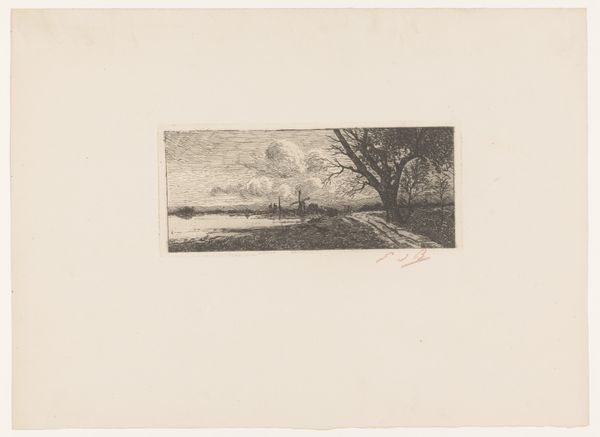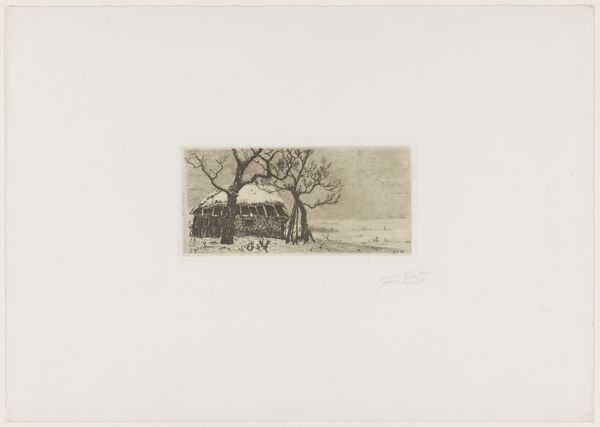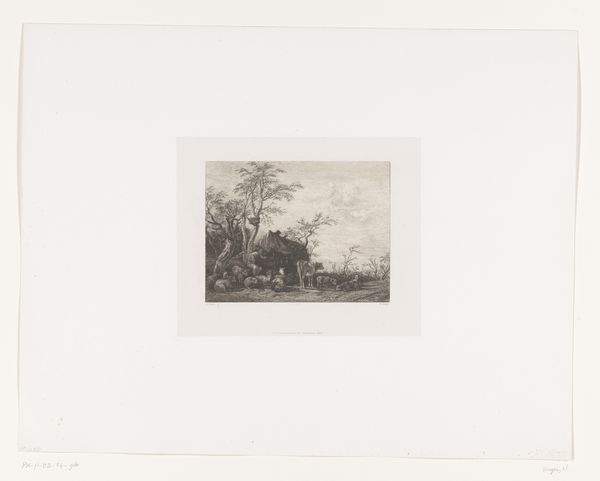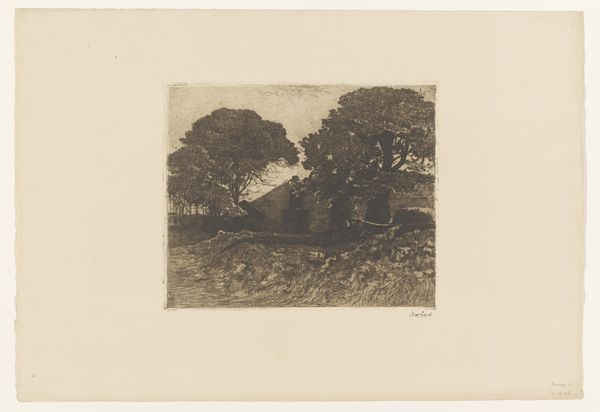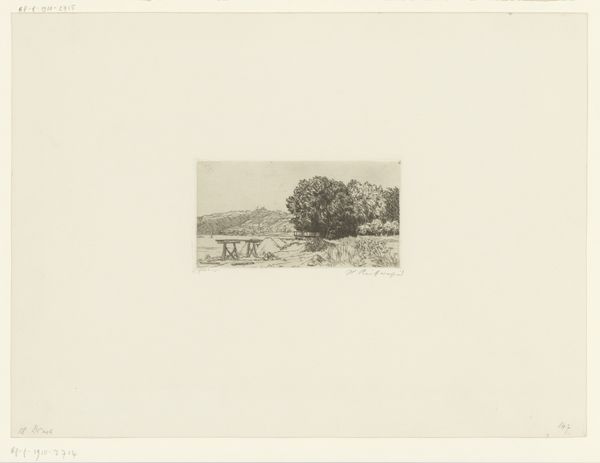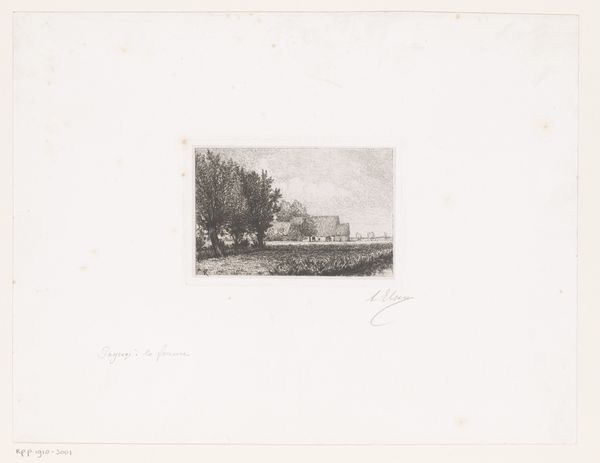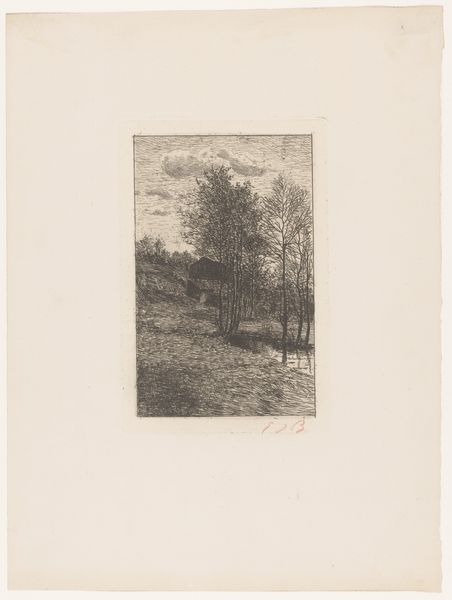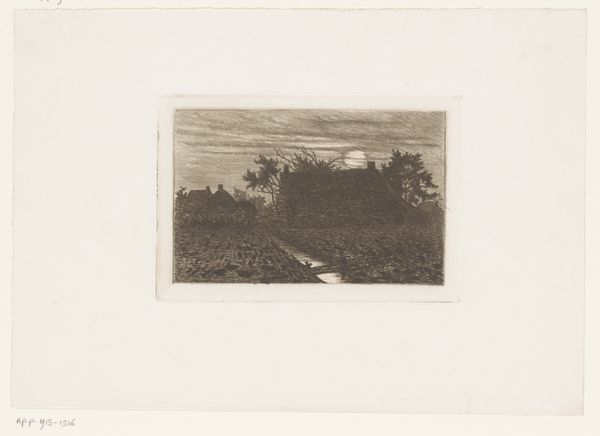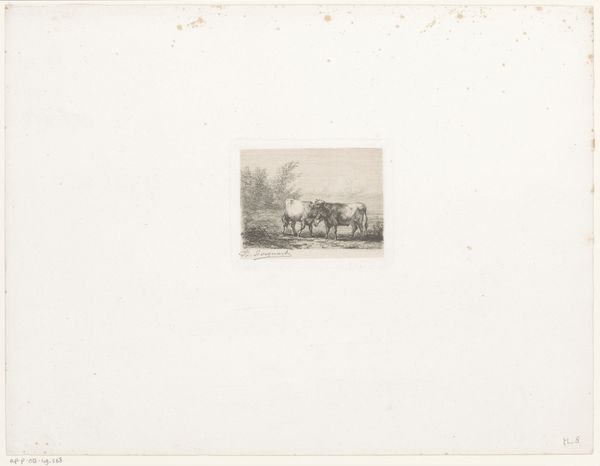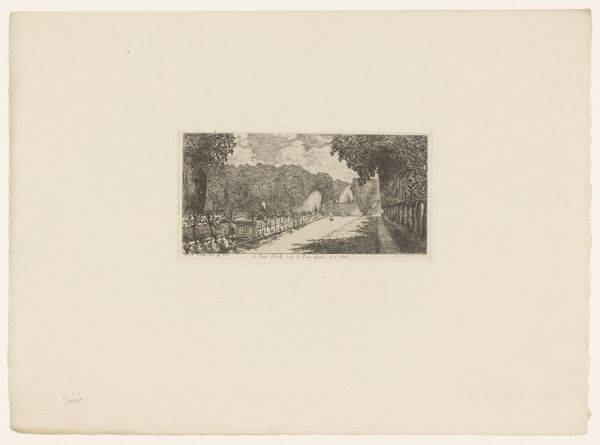
Dimensions: height 117 mm, width 160 mm
Copyright: Rijks Museum: Open Domain
Curator: Looking at this etching from Emile de Baré, titled "Landweg met boerderij tussen bomen" or "Country Road with Farmhouse Between Trees," created between 1865 and 1902, I am immediately drawn to its understated charm. Editor: I find it melancholy, a kind of somber meditation. The scene is hushed, the tonality quite muted, which imbues a sense of rural isolation, almost an abandonment of the landscape and subjects. Curator: That’s a sharp observation. During this period, landscape art, while seemingly bucolic, often served to reinforce notions of national identity and ownership, but in other times it represented social hierarchies and structures. De Baré created landscapes that served the aesthetic and the politics of place and time. Editor: Yes, but here, there’s a flattening, both literal in the landscape and symbolic in what I’d see as potential meanings and social statements, and perhaps the under-representation and limited means of agricultural families, captured through the etching technique. What looks like calm might in reality denote something unsettling about human interventions into nature. Curator: Interesting point. De Baré captures a seemingly untouched countryside, but the farmhouse and the road are markers of human impact on this space. Editor: Precisely! It’s not untouched at all. Even the framing of the etching asks us to observe it from the artist's privileged distance. Curator: Etching also became a method, as printmaking developed, for artworks to have reproducibility, and as art shifted out of private holdings and collections, public access to see works grew into demand, to shape culture and thought in the general populace. Editor: You're right, that democratization can't be ignored! The etching process mirrors that, in terms of production, too. This reproduction, making something readily accessible, speaks directly to my thoughts about what might be underlying these artistic choices. Curator: Indeed, we can continue our inquiry into the social and political meanings by tracing the trajectory of prints from elite drawing rooms to burgeoning public collections and libraries. Editor: A continued dialogue, I hope, to deepen our viewers' awareness. Thanks for opening this view!
Comments
No comments
Be the first to comment and join the conversation on the ultimate creative platform.

